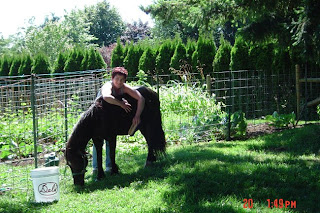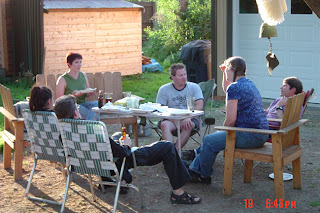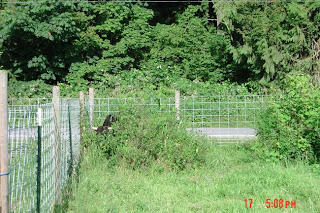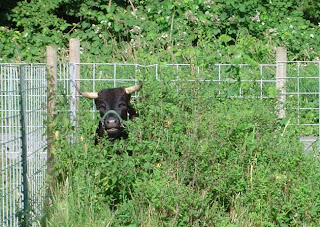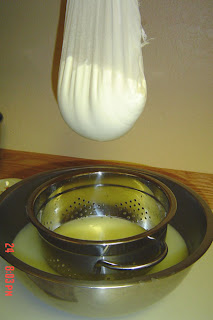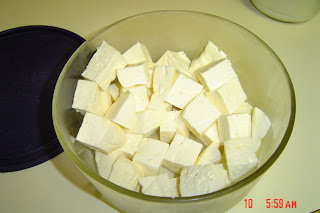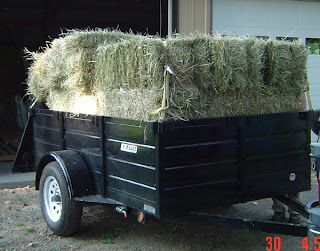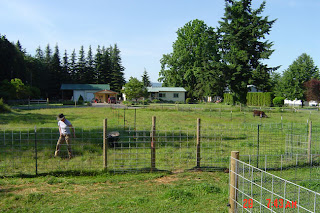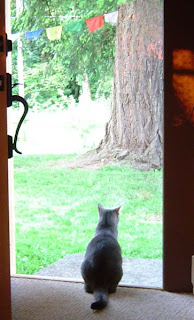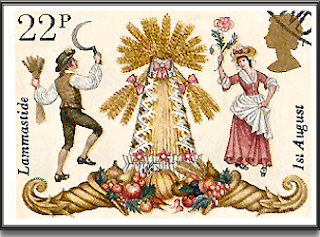 To the agrarian societies of medieval Europe, early August signalled the beginning of the harvest season, the time when the first grains were harvested and many fruits and vegetables ripened, ready for picking. A quarter of the annual solar wheel had now turned since the celebration of Beltane, the time of planting crops and vegetable gardens. Those crops and gardens planted at Beltane, now poured forth their bounty proving early August a reason for celebration.
To the agrarian societies of medieval Europe, early August signalled the beginning of the harvest season, the time when the first grains were harvested and many fruits and vegetables ripened, ready for picking. A quarter of the annual solar wheel had now turned since the celebration of Beltane, the time of planting crops and vegetable gardens. Those crops and gardens planted at Beltane, now poured forth their bounty proving early August a reason for celebration.As the month of August begins, the rising and setting positions of the Sun move noticeably more southward each day. So too, the mid-day peak elevation of the solar orb begins dropping at a rate evident with the passing days. As the long, high-sun days of summer come to an end, August 1 signals the beginning of solar autumn. Early August, usually the first, is one of the four annual cross-quarter days -- days at the midway point between the solstice and equinox. (The other cross-quarter days are known to us as Groundhog Day, May Day and Halloween but had more significant titles during pre-industrial times.) While today we take the "official" beginnings of the seasons to be marked by the solstices and equinoxes in the third week of December, March, June and September, many people and cultures have considered the seasons to change at the cross-quarter date.
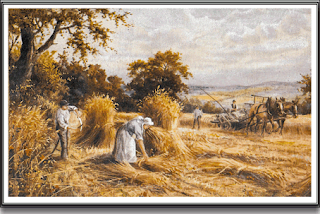 In pagan cultures, the August cross-quarter day was the time to honour the mighty sun god and the gods of the grain by ritualistically sacrificing the first grains to ensure the continuity of life. In the British Isles, the Anglo-Saxon (Lammas), Celtic (Lughnasad), and Irish (Lughnassadh, (pronounced Lunasa) festivals honoured Lugh, god of light, and John Barleycorn, personification of barley and other grains -- and the brews made from them.
In pagan cultures, the August cross-quarter day was the time to honour the mighty sun god and the gods of the grain by ritualistically sacrificing the first grains to ensure the continuity of life. In the British Isles, the Anglo-Saxon (Lammas), Celtic (Lughnasad), and Irish (Lughnassadh, (pronounced Lunasa) festivals honoured Lugh, god of light, and John Barleycorn, personification of barley and other grains -- and the brews made from them.There are many names by which this day is known, but the most common to the English-speaking world is Lammas. The name Lammas derives from "loaf mass" an early Anglo-Saxon feast celebrating the corn (i.e. grain) harvest through the ritual killing of the corn king. (Through the ritual re-enactment of the slaying and restoration of John Barleycorn, he became associated with beer and cider drinking.)
With the advent of Christianity in Britain, pagan rituals were officially replaced by a Mass in which the first harvested grains were baked into loaves of bread, taken to church, blessed and then offered as thanksgiving to God. Over the years as British society turned from its agricultural roots, the traditions of Lammas faded away across the kingdom. In 1843 at Morwenstow in Cornwall, England, the Reverend R. S. Hawker decided to revive the Harvest Festival, urging its celebration in schools and churches across the nation.
In many agrarian communities, the last harvested sheaf of grain was treated with special honour, for the farmers believed that with the cutting of the last sheaf, the corn spirit retreated into the soil. There in its underground refuge, the corn spirit slept throughout the Winter until Spring. In the Spring that last sheaf was returned to the fields when new seed was being sown, so that its spirit would awaken both seed and land.
 One traditional Lammas custom was the construction of the kern-baby, corn dolly, or corn maiden. This figure, braided into a woman's form from the last harvested sheaf of grain, represented the Harvest Spirit. (In America, the tradition is continued in the making of corn husk dolls.) The doll would be saved until Spring, when it was ploughed into the field to consecrate the new planting and insure a good harvest. In other traditions, the corn dolly was fed and watered throughout the Winter, then burned in the fires at Beltane to insure a continuation of good growth.
One traditional Lammas custom was the construction of the kern-baby, corn dolly, or corn maiden. This figure, braided into a woman's form from the last harvested sheaf of grain, represented the Harvest Spirit. (In America, the tradition is continued in the making of corn husk dolls.) The doll would be saved until Spring, when it was ploughed into the field to consecrate the new planting and insure a good harvest. In other traditions, the corn dolly was fed and watered throughout the Winter, then burned in the fires at Beltane to insure a continuation of good growth.Another custom drawn from Lammas relates to fire. Lammas was, to the Celts, one of four Great Fire Festivals, held on the cross-quarter days. During Lammas, the custom of lighting bonfires was intended to add strength to the powers of the waning sun. Afterward, the fire brands were kept in the home through the Winter as protection against storms, lightning and fires caused by lightning.
Throughout much of Europe, Lammastide was also a traditional time of year for craft festivals -- and still is today in many British communities. The medieval guilds would create elaborate displays of their wares, decorating their shops and themselves in bright colours and ribbons, marching in parades, and performing ceremonial plays and dances for the entranced onlookers. The atmosphere must have been quite similar to those activities displayed at our modern-day Renaissance Festivals.
In America, the small town or country fair echoes the Lammas tradition. Their agricultural competitions and midway games resemble the ancient European festivals at which people gathered to pay homage to the land and the fruits of their labour and to take part in community reverie.
The recognition of this cross-quarter day is not restricted to the British Isles and Celtic traditions. Games and contests honouring the harvest have been an ancient tradition across Europe. For example, in many Slavic regions, the harvest festival is called Dozynki. Villagers, who work the fields and harvested the crops, dress in colourful folk costumes and carry wreaths made of corn, wheat and a variety of flowers to the owner of the lands. A loaf of bread, baked from the fresh grain, is presented to the lord and lady of the manor, who then return slices of the loaf to their guests who had worked hard to make the harvest possible. During these festivities, the villagers play instruments, dance and sing in praise of the harvest and their landlord.
With the beginning of solar autumn at Lammastide, the Sun enters its old age, its golden months. The heat of summer lingers a little longer, perhaps even bringing in the Dog Days of August. The ripening grains are followed by the ripening of the fruits of tree and vine. A perfect time to give thanks to the Earth for its bounty and beauty. Truly, early August is a time to rejoice and be festive, a time to honour those among us who still know how to reap the harvest and connect us with our ancestors.

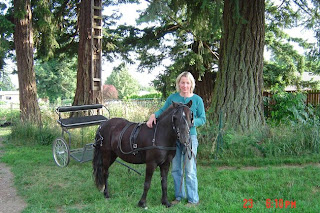

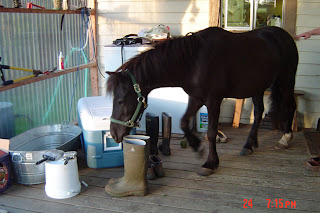
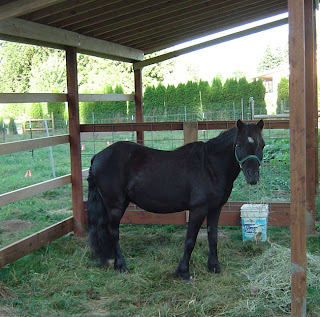 He's a 14 yr old Shetland gelding, about 11h (44" at the withers) tall. Gemini was formerly used at
He's a 14 yr old Shetland gelding, about 11h (44" at the withers) tall. Gemini was formerly used at 